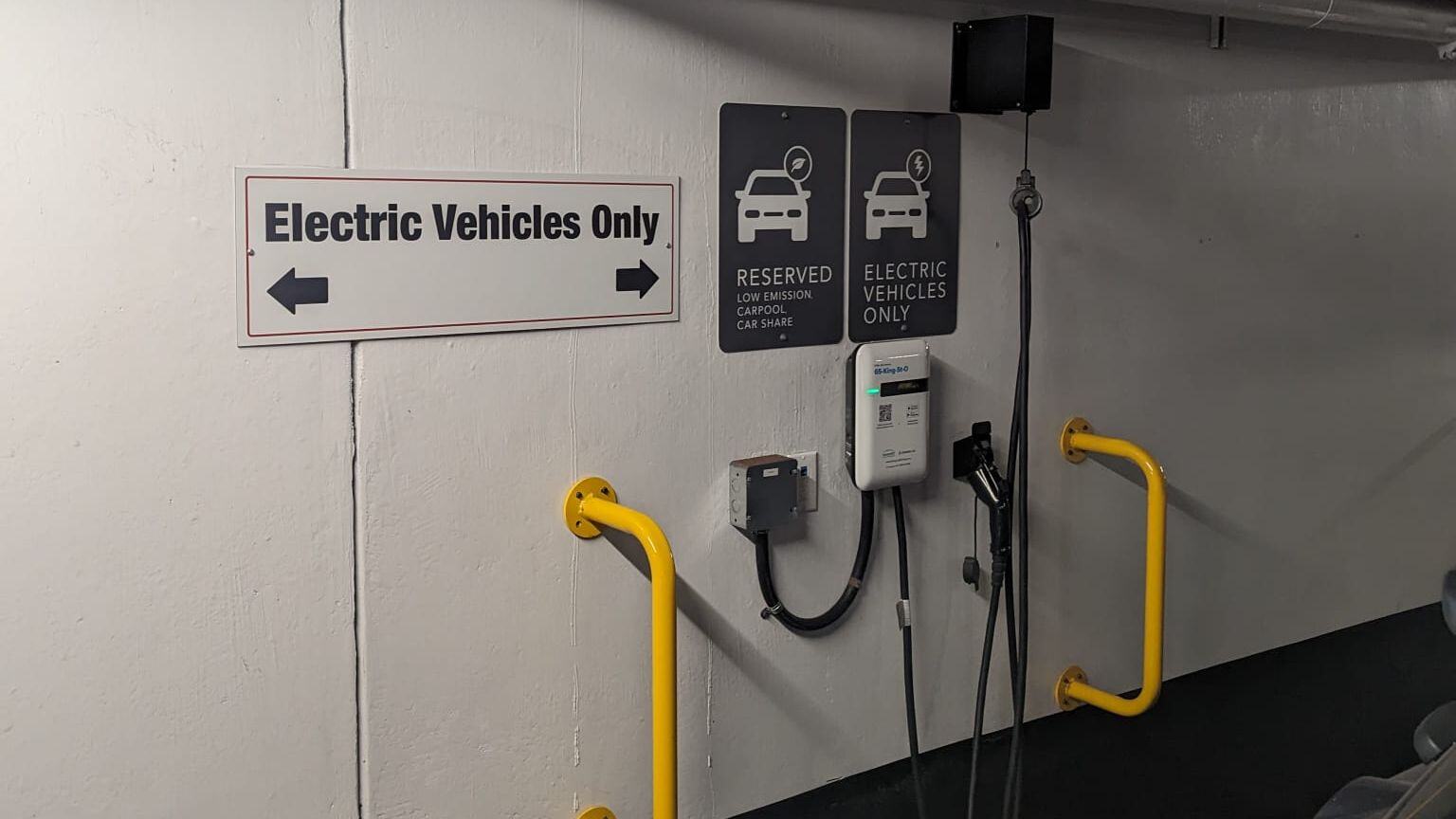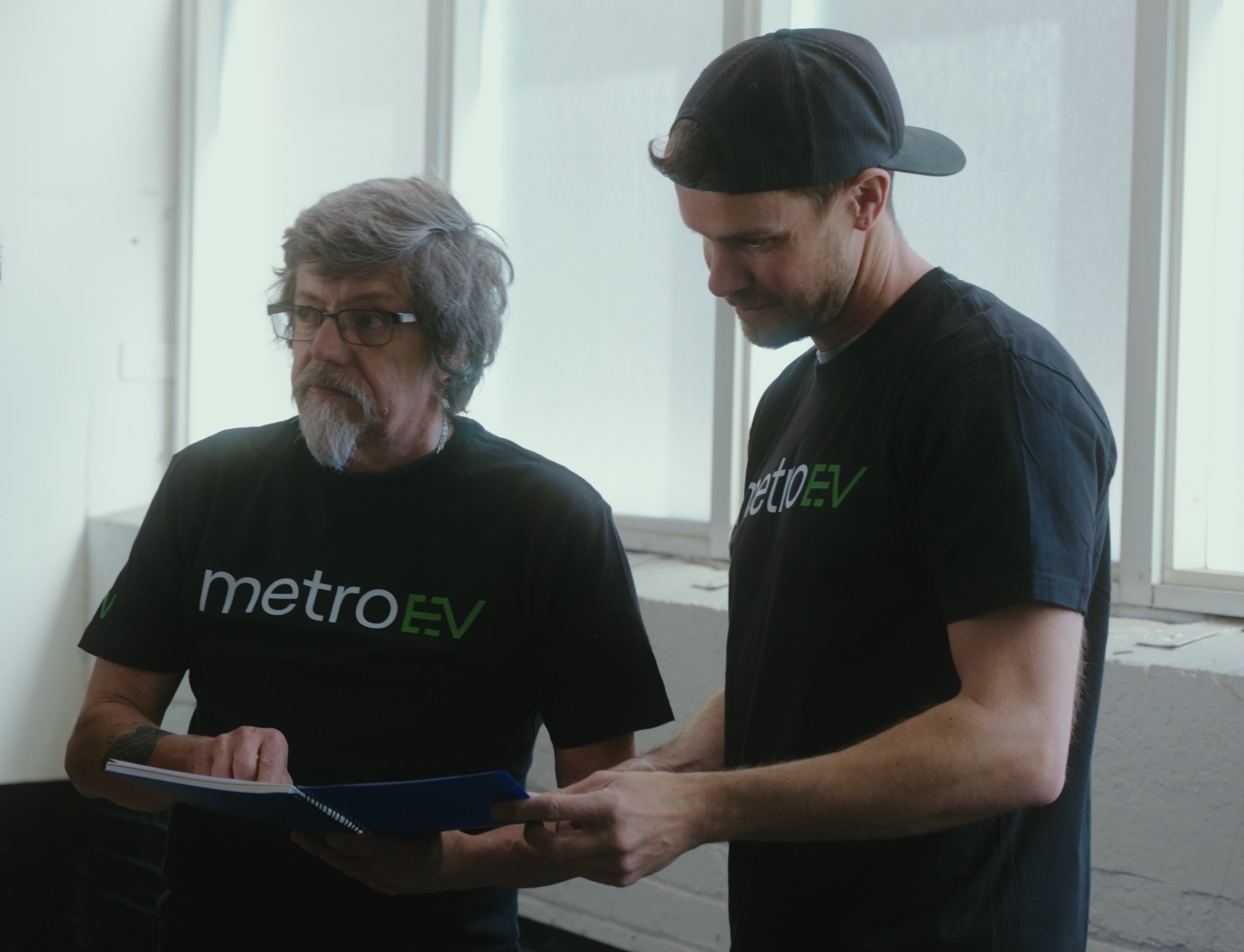Excitement about your new electric vehicle can quickly turn into a whirlwind of decisions, one of them being where to install your EV charger.
We'll break down the installation process, explore the pros and cons of indoor vs. outdoor chargers, and compare the different EV charger types available. By the end, you'll be well-equipped to pick the perfect spot for your home charging station.
Indoor EV Charger Installation
While our EV chargers are built to withstand any climate, installing them indoors offers some practical benefits. In most cases, accessing an existing power source is simpler inside a garage or other sheltered location. Additionally, since there are walls and columns readily available for mounting, the need for additional equipment like pedestals is typically eliminated.
This streamlined process can translate to a smoother and potentially more cost-effective installation.
Benefits Of Indoor EV Chargers
Installing EV charging stations inside a parking garage offers several advantages.
Protection from the elements: Indoor chargers are shielded from rain, snow, extreme temperatures, and potential damage, extending their lifespan and ensuring optimal charging performance.
Convenience and security: Public indoor EV chargers offer protection from vandalism while enabling convenient charging during errands or outings.
Potential lower installation costs: Indoor EV charger installation can leverage existing garage wiring and avoids complex outdoor work, resulting in lower costs.
Potential for smart charging: Indoor EV chargers can integrate with smart systems for off-peak hour scheduling and management, potentially saving you money on electricity and reducing strain on the power grid during peak times.
Outdoor EV Charger Installation
Outdoor EV charger installations may require more planning compared to indoor setups due to weatherproofing needs. This often involves additional labor for tasks like trenching or digging conduits to run the wiring from a power source to the charger location. Additionally, depending on your specific installation, a concrete pad might be necessary to mount the pedestal securely.
In some cases, concrete or asphalt repairs around the trenching area may also be required. We recommend consulting with a qualified EV charger installer to ensure a smooth and efficient outdoor installation process that meets all local regulations.
Benefits Of Outdoor EV Chargers
While indoor chargers offer protection and convenience, outdoor EV chargers in multi-residential and commercial spaces have their own set of advantages:
Increased Accessibility: Outdoor chargers make EV charging accessible to a wider range of residents, tenants, or employees who may not have access to dedicated garage parking.
Maximized Space Utilization: Especially in dense areas, outdoor chargers free up valuable garage space for parking or storage.
Flexibility in Placement: Outdoor chargers offer more flexibility in placement, potentially allowing for more charging stations to be installed within a property.
Appeal to Eco-Conscious Tenants/Customers: Offering EV charging options can attract environmentally conscious residents or customers, boosting property value or attracting new business.
How EV Charging Boosts Property Value
Best Outdoor EV Charger For Cold Weather
When searching for an outdoor EV charger in Canada, prioritize durability and weather resistance. Look for a charger with a NEMA 4 enclosure rating, which signifies its ability to withstand rain, snow, and extreme temperatures.
contact us
Indoor or outdoor EV charger? We can help you decide. Get a free quote today.
Have questions? Our EV experts can help you decide the best location for your EV charger installation. Fill out this form and we'll get back to you shortly.
Electric Vehicle Charger Types
EV chargers come in three main types, categorized by their charging speed:
Level 1: The slowest option, Level 1 chargers typically use a standard 120-volt household outlet and are considered outdated.
Level 2: These faster chargers use a 240-volt outlet, fully charging most EVs within several hours and are commonly installed in most locations.
Level 3 (DC Fast Charging): The fastest option, DC fast chargers provide a significant amount of power in a short time and are ideal for high volume commercial locations. However, they are not as widely available as Level 1 and Level 2 chargers.
Understanding the Different EV Charger Types
Choosing The Best Location For Your EV Charger
The best spot for your EV charger depends on your situation. Think about budget, security, space, weather, and how much electricity you have available. Indoor chargers are cheaper and protected from the elements, but outdoor units might be needed for limited garage space or detached buildings.
Best EV Charging Solution for Your Condo Building
Get A Quote Today!
Contact MetroEV to get an EV charging quote. Take the first step towards an electrified future with our team of experts today. Whether you are considering EV charging for multi-residential living, commercial, or retail spaces, we can help. metroEV is ready to tailor a solution that aligns with your unique EV charging goals ensuring a smooth transition.

AUTHOR
Shai Sinai
Shai is the Vice President of Sales at metroEV, specializing in electric vehicle charging station installations for multi-residential, commercial and public properties. With hands-on experience across the entire process—from site assessments and EV Ready planning to infrastructure design and installation—Shai brings deep industry knowledge and practical insight to every project.

-1.png)
.png)





